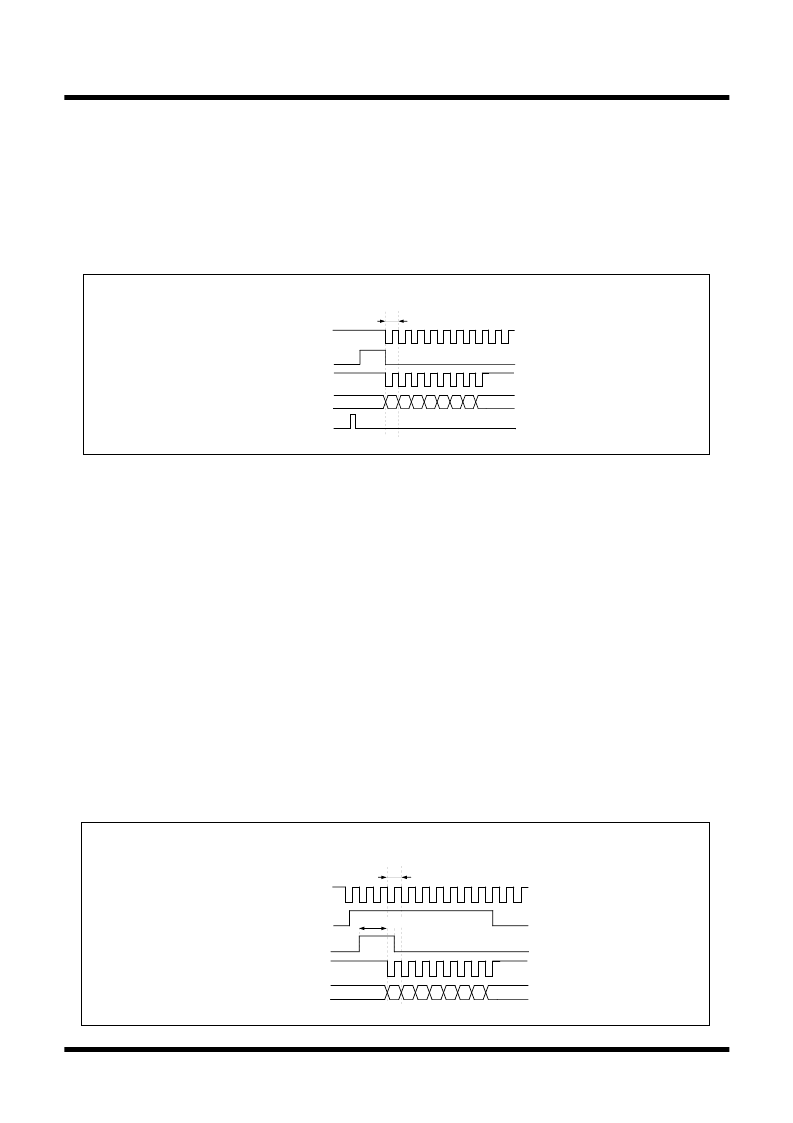- 您現(xiàn)在的位置:買賣IC網(wǎng) > PDF目錄370830 > M30218FA (Mitsubishi Electric Corporation) SINGLE-CHIP 16-BIT CMOS MICROCOMPUTER PDF資料下載
參數(shù)資料
| 型號(hào): | M30218FA |
| 廠商: | Mitsubishi Electric Corporation |
| 英文描述: | SINGLE-CHIP 16-BIT CMOS MICROCOMPUTER |
| 中文描述: | 單片16位CMOS微機(jī) |
| 文件頁數(shù): | 127/467頁 |
| 文件大小: | 4984K |
| 代理商: | M30218FA |
第1頁第2頁第3頁第4頁第5頁第6頁第7頁第8頁第9頁第10頁第11頁第12頁第13頁第14頁第15頁第16頁第17頁第18頁第19頁第20頁第21頁第22頁第23頁第24頁第25頁第26頁第27頁第28頁第29頁第30頁第31頁第32頁第33頁第34頁第35頁第36頁第37頁第38頁第39頁第40頁第41頁第42頁第43頁第44頁第45頁第46頁第47頁第48頁第49頁第50頁第51頁第52頁第53頁第54頁第55頁第56頁第57頁第58頁第59頁第60頁第61頁第62頁第63頁第64頁第65頁第66頁第67頁第68頁第69頁第70頁第71頁第72頁第73頁第74頁第75頁第76頁第77頁第78頁第79頁第80頁第81頁第82頁第83頁第84頁第85頁第86頁第87頁第88頁第89頁第90頁第91頁第92頁第93頁第94頁第95頁第96頁第97頁第98頁第99頁第100頁第101頁第102頁第103頁第104頁第105頁第106頁第107頁第108頁第109頁第110頁第111頁第112頁第113頁第114頁第115頁第116頁第117頁第118頁第119頁第120頁第121頁第122頁第123頁第124頁第125頁第126頁當(dāng)前第127頁第128頁第129頁第130頁第131頁第132頁第133頁第134頁第135頁第136頁第137頁第138頁第139頁第140頁第141頁第142頁第143頁第144頁第145頁第146頁第147頁第148頁第149頁第150頁第151頁第152頁第153頁第154頁第155頁第156頁第157頁第158頁第159頁第160頁第161頁第162頁第163頁第164頁第165頁第166頁第167頁第168頁第169頁第170頁第171頁第172頁第173頁第174頁第175頁第176頁第177頁第178頁第179頁第180頁第181頁第182頁第183頁第184頁第185頁第186頁第187頁第188頁第189頁第190頁第191頁第192頁第193頁第194頁第195頁第196頁第197頁第198頁第199頁第200頁第201頁第202頁第203頁第204頁第205頁第206頁第207頁第208頁第209頁第210頁第211頁第212頁第213頁第214頁第215頁第216頁第217頁第218頁第219頁第220頁第221頁第222頁第223頁第224頁第225頁第226頁第227頁第228頁第229頁第230頁第231頁第232頁第233頁第234頁第235頁第236頁第237頁第238頁第239頁第240頁第241頁第242頁第243頁第244頁第245頁第246頁第247頁第248頁第249頁第250頁第251頁第252頁第253頁第254頁第255頁第256頁第257頁第258頁第259頁第260頁第261頁第262頁第263頁第264頁第265頁第266頁第267頁第268頁第269頁第270頁第271頁第272頁第273頁第274頁第275頁第276頁第277頁第278頁第279頁第280頁第281頁第282頁第283頁第284頁第285頁第286頁第287頁第288頁第289頁第290頁第291頁第292頁第293頁第294頁第295頁第296頁第297頁第298頁第299頁第300頁第301頁第302頁第303頁第304頁第305頁第306頁第307頁第308頁第309頁第310頁第311頁第312頁第313頁第314頁第315頁第316頁第317頁第318頁第319頁第320頁第321頁第322頁第323頁第324頁第325頁第326頁第327頁第328頁第329頁第330頁第331頁第332頁第333頁第334頁第335頁第336頁第337頁第338頁第339頁第340頁第341頁第342頁第343頁第344頁第345頁第346頁第347頁第348頁第349頁第350頁第351頁第352頁第353頁第354頁第355頁第356頁第357頁第358頁第359頁第360頁第361頁第362頁第363頁第364頁第365頁第366頁第367頁第368頁第369頁第370頁第371頁第372頁第373頁第374頁第375頁第376頁第377頁第378頁第379頁第380頁第381頁第382頁第383頁第384頁第385頁第386頁第387頁第388頁第389頁第390頁第391頁第392頁第393頁第394頁第395頁第396頁第397頁第398頁第399頁第400頁第401頁第402頁第403頁第404頁第405頁第406頁第407頁第408頁第409頁第410頁第411頁第412頁第413頁第414頁第415頁第416頁第417頁第418頁第419頁第420頁第421頁第422頁第423頁第424頁第425頁第426頁第427頁第428頁第429頁第430頁第431頁第432頁第433頁第434頁第435頁第436頁第437頁第438頁第439頁第440頁第441頁第442頁第443頁第444頁第445頁第446頁第447頁第448頁第449頁第450頁第451頁第452頁第453頁第454頁第455頁第456頁第457頁第458頁第459頁第460頁第461頁第462頁第463頁第464頁第465頁第466頁第467頁

113
Serial I/O2
M
i
t
s
u
M
S
b
i
s
3
M
h
0
I
C
i
m
2
R
i
1
O
c
r
8
C
o
c
o
G
M
m
p
r
P
u
t
u
T
e
r
p
R
s
o
U
S
I
N
G
L
E
-
C
H
I
P
1
6
-
B
I
T
C
M
O
O
E
Figure 97. S
RDY2
Output Operation
Figure 98. S
RDY2
Input Operation
Serial operation used S
RDY2
output
Internal clock
S
RDY2
(output)
"H"
"L"
Tc
Tc : Internal synchronous clock is selected by bits 5 to 7 of address 0348
16
D
0
D
1
D
2
D
3
D
4
D
5
D
6
D
7
CLK2i
(i = 1, 2)S
S
OUT2
Transfer clock
: 8-bit serial I/O mode
: Internal synchronous clock
"1"
"0"
Serial transfer status flag
(bit 5 at address 0344
16
)
Serial operation used S
RDY2
input
Internal clock
"1"
"0"
S
RDY2
(input
)
"H"
"L"
Tc
Tc : Internal synchronous clock is selected by bits 5 to 7 of address 0348
16
D
0
D
1
D
2
D
3
D
4
D
5
D
6
D
7
1.5 cycle or more
CLK2i
(i = S
S
OUT2
Operation mode
Transfer clock
: 8-bit serial I/O mode
: Internal synchronous clock
Serial transfer status flag
(bit 5 at address 0344
16
)
(4) S
RDY2
output signal
The S
RDY2
output is a transmit/receive enable signal which informs the serial transfer destination that
transmit/receive is ready. In the initial status[serial I/O initialization bit (bit 4 of address 0342
16
) = “0” ],
the S
RDY2
output goes to “L” (or the S
RDY2
output goes to “H”). When the transmitted data is written to
the serial I/O2 register (address 0346
16
), the S
RDY2
output goes to “H” (or the S
RDY2
output goes to
“L”). When a transmit/receive operation is started and the transfer clock goes to “L”, the S
RDY2
output
goes to “L” (or the S
RDY2
output goes to “H”).
(5) S
RDY2
input signal
The S
RDY2
input is a signal for receiving a transmit/receive ready completion signal from the serial
transfer destination. The S
RDY2
input signal becomes valid only when the S
RDY2
input and the S
BUSY2
output are used.
When the internal synchronous clock is selected, input a “L” level signal into the S
RDY2
input (or a “H”
level signal into the S
RDY2
input) in the initial status[serial I/O initialization bit (bit 4 of address 0342
16
)
= “0” ]. When a “H” level signal is input into the S
RDY2
input (or a “L” level signal is input into the S
RDY2
input) for a period of 1.5 cycles or more of transfer clock, transfer clocks are output from the S
CLK2i (i =
1, 2)
output and a transmit/receive operation is started. When S
RDY2
input is driven “L”
(or S
RDY2
input
is driven “H”)
during transmit/receive operation, the transfer clock being output from S
CLK2i (i = 1, 2)
remains active until after the system finishes sending or receiving the designated number of bits,
without stopping the transmit/receive operation immediately.
The handshake unit of the 8-bit serial I/O is 8 bits, and that of the automatic transfer serial I/O is 8 bits.
When the external synchronous clock is selected, the S
RDY2
input becomes one of the triggers to
output the S
BUSY2
signal. To start a transmit/receive operation (S
BUSY2
output: “L”, (or S
BUSY2
output:
“H”)), input a “H” level signal into the S
RDY2
input (or a “L” level signal into the S
RDY2
input,) and also
write transmit data into the serial I/O2 register (address 0346
16
).
相關(guān)PDF資料 |
PDF描述 |
|---|---|
| M30218FC | SINGLE-CHIP 16-BIT CMOS MICROCOMPUTER |
| M30218FCFP | SINGLE-CHIP 16-BIT CMOS MICROCOMPUTER |
| M30218MC | SINGLE-CHIP 16-BIT CMOS MICROCOMPUTER |
| M30220MA-101GP | RES-ARRAY 100-OHM 2-ELEMENT 5% 0.063W CONVEX THK-FILM SMD-0505 TR-7-PA |
| M30220MA-101RP | SINGLE-CHIP 16-BIT CMOS MICROCOMPUTER |
相關(guān)代理商/技術(shù)參數(shù) |
參數(shù)描述 |
|---|---|
| M30218FC | 制造商:MITSUBISHI 制造商全稱:Mitsubishi Electric Semiconductor 功能描述:SINGLE-CHIP 16-BIT CMOS MICROCOMPUTER |
| M30218FCFP | 制造商:MITSUBISHI 制造商全稱:Mitsubishi Electric Semiconductor 功能描述:SINGLE-CHIP 16-BIT CMOS MICROCOMPUTER |
| M30218MA | 制造商:MITSUBISHI 制造商全稱:Mitsubishi Electric Semiconductor 功能描述:SINGLE-CHIP 16-BIT CMOS MICROCOMPUTER |
| M30218MAA101 | 制造商:Panasonic Industrial Company 功能描述:IC |
| M30218MC | 制造商:MITSUBISHI 制造商全稱:Mitsubishi Electric Semiconductor 功能描述:SINGLE-CHIP 16-BIT CMOS MICROCOMPUTER |
發(fā)布緊急采購,3分鐘左右您將得到回復(fù)。